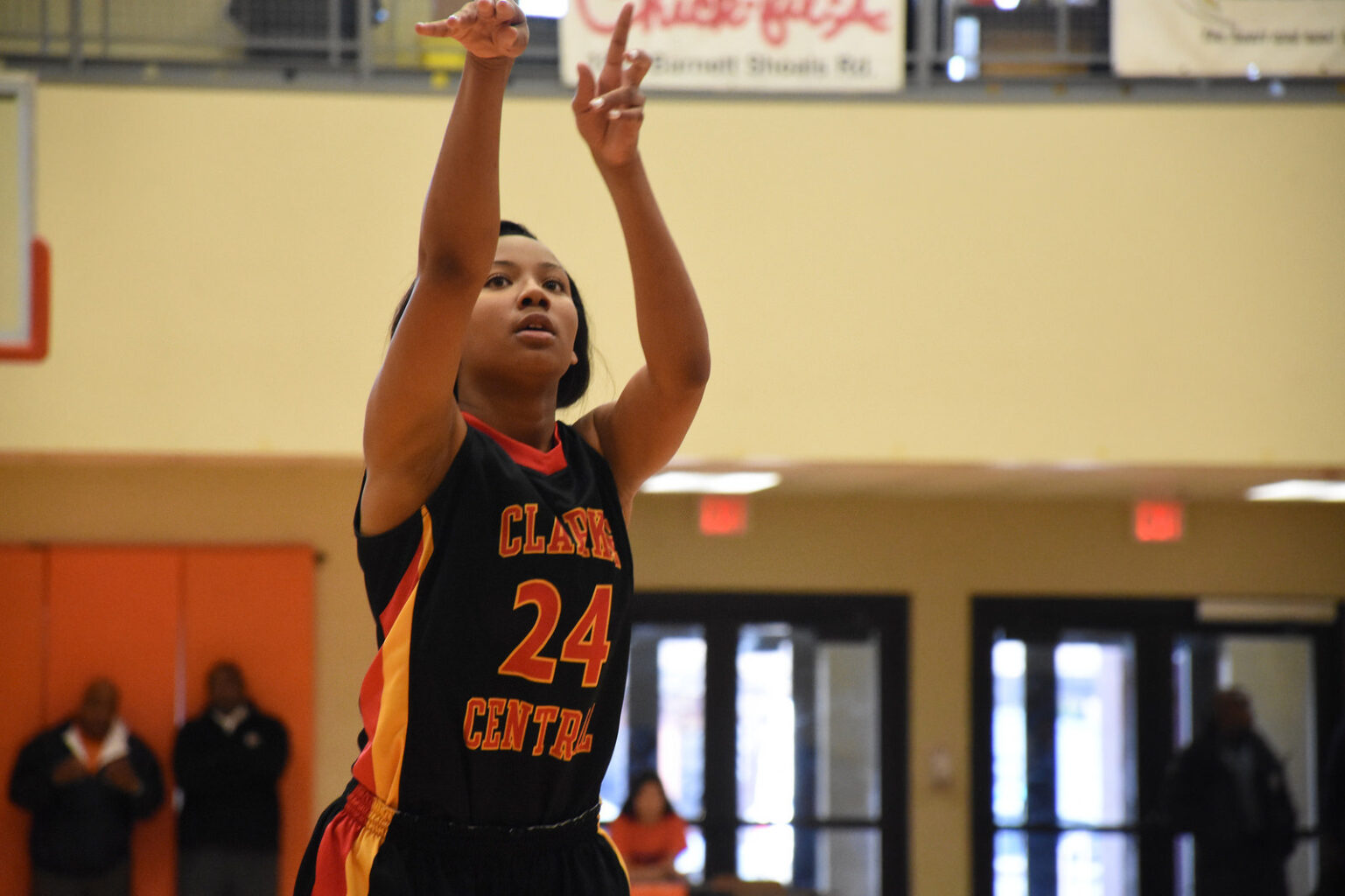Junior Fredricka Sheats shoots a free throw in a game against Cedar Shoals High School. Although the Lady Glads varsity basketball team is one of the most successful sports teams in CCHS, it is often overlooked due to the gender of the players. Photo by Julie Alpaugh.
By ANA ALDRIDGE – Staff Writer
Freshman Ana Aldridge takes a closer look at the gap between women’s and men’s sports at high school and collegiate levels.
It’s easy to overlook the gap between women’s and men’s sports. The reason some disregard this gap is because women have made great progress establishing themselves in sports in recent history, but there is still significant room for improvement.
On June 23 1972, President Richard Nixon signed Title IX of the Education Amendments of 1972, which prohibited discrimination on the basis of sex in any federally funded education program or activity.
According to the Feminist Majority Foundation, before Title IX was signed, women were two percent of the college athletes in the United States, and teen girls were seven percent of the students participating in high school sports. These numbers had significantly improved by 2011, with 43 percent of college athletes being women, and 41.5 percent of teen girls participating in high school sports.
These numbers are something for both men and women to take pride in. They represent the growth of women’s involvement and recognition in sports. However, there is still a gap that cannot be ignored. Why is it that women make up 53 percent of college students and only 43 percent of college athletes? And why is it that at our own school, Clarke Central High School, football games, which consist of only boy athletes, are the most attended and most recognized sporting events? The two sports for girls specifically at our school are volleyball and softball, and attendance to their matches is severely lacking.
According to “Where Girls Are Missing Out on High-School Sports” by Alia Wong in The Atlantic, a gap is thought to be “large” if the difference between the percentage of spots on teams apportioned to girls and that apportioned to boys is 10 points or higher. Based on an infographic embedded in Wong’s article, 66.3 percent of high schools in Georgia are considered to have a large gender equity gap in sports.
States neighboring Georgia including South Carolina, Alabama and especially Florida, have smaller gender equity gaps in their high school sports. As a high school in Georgia, it is CCHS’ duty to take action to change this statistic as much as possible.
It’s important for women to be involved in sports for so many reasons. According to the Feminist Majority Foundation, regular physical activity may decrease a woman’s risk of breast cancer, increases self esteem and confidence, increases a woman’s bone mass and decreases her chance of osteoporosis, a medical condition where one’s bones become brittle and fragile due to a loss of tissue.
Even if one chooses to disregard the many health benefits, studies show that women and girls who are involved in sports have higher grades than students who don’t, have lower dropout rates, are less likely to use drugs, are more likely to graduate from college and learn skills that will help them all of their lives.
I know from personal experience that being physically active overall makes me feel better. Healthy, happy students of all genders are something every school should strive to have. If this means encouraging girls to participate in sports, and maybe even seeing if students would be interested in a girls football team, then that’s what must be done. At the very least, female sporting events should be equally attended because the gap is so close to closing.
